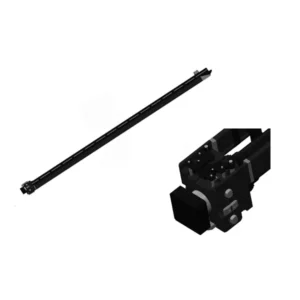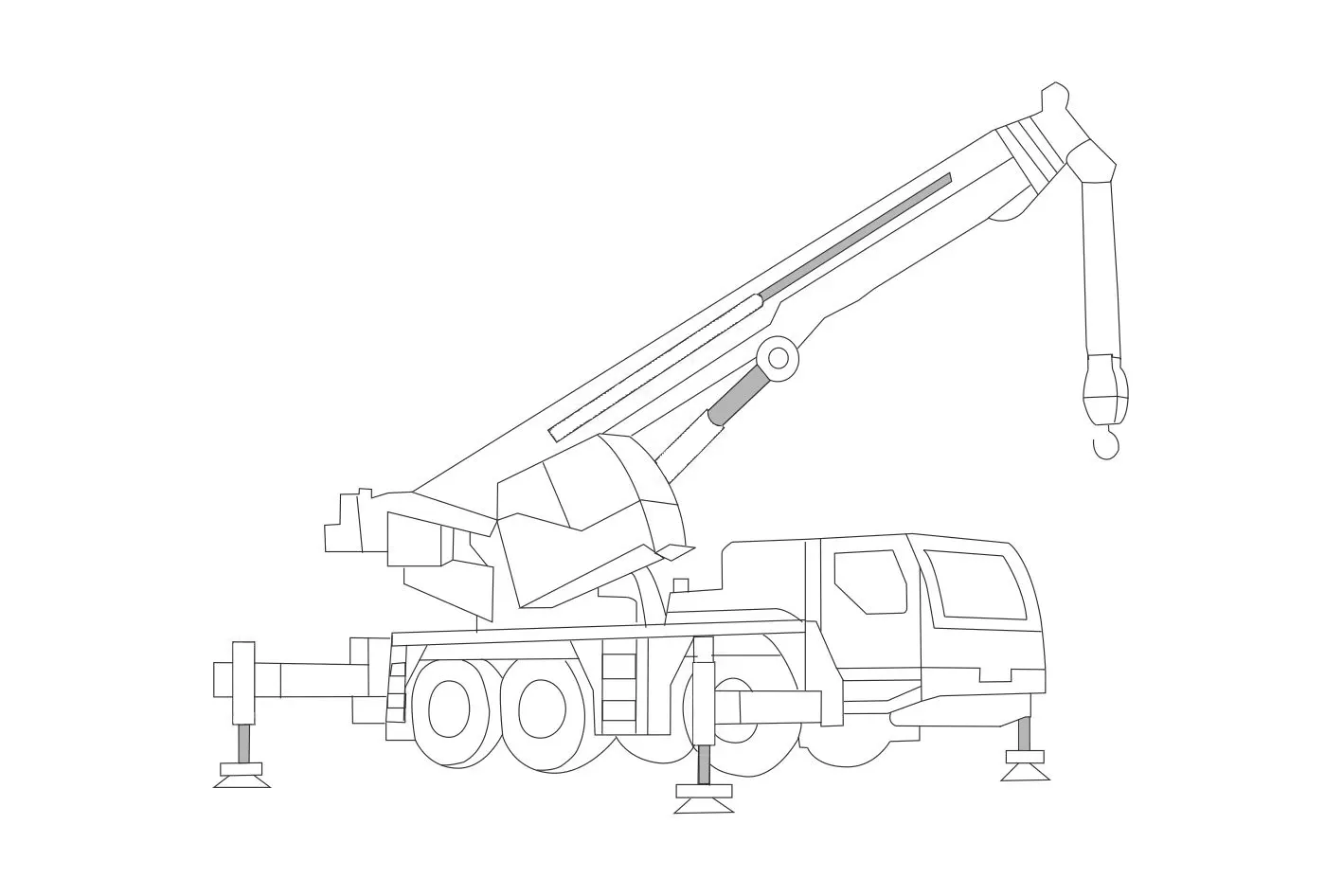Mobile Crane Telescopic Cylinder
Mobile Crane Telescopic Cylinder

The mobile crane telescopic cylinder is vital in mobile crane systems and is specifically designed to enhance reach and lifting performance. This hydraulic cylinder enables crane operators to extend the boom sections of the crane, allowing for increased vertical and horizontal reach and improved lifting capacity.
The mobile crane telescopic cylinder is a crucial component that enhances mobile cranes’ reach, lifting capacity, and overall performance. With its robust construction, telescopic design, extended reach, and improved lifting capacity, this hydraulic cylinder empowers operators to tackle diverse lifting tasks easily and efficiently. By following the recommended usage methods and maintenance practices, operators can maximize the longevity and performance of the mobile crane telescopic cylinder, contributing to increased productivity, versatility, and safety on construction sites and industrial applications. Invest in this essential hydraulic component to elevate the capabilities of your mobile crane, ensuring successful and efficient lifting operations.
Mobile Crane Telescopic Cylinder Key Characteristics:
- 坚固的结构
- The mobile crane telescopic cylinder is engineered with high-quality materials, ensuring durability and longevity even in demanding operating conditions.
- It is designed to withstand heavy loads, vibrations, and extreme weather conditions, providing reliable performance throughout its lifespan.
- Telescopic Design:
- This hydraulic cylinder features a telescoping mechanism that allows for the extension and retraction of multiple boom sections.
- The telescopic design enables the crane to reach greater heights and distances, making it suitable for a wide range of lifting tasks.
- Enhanced Reach and Flexibility:
- By extending the boom sections, the telescopic cylinder significantly increases the crane’s reach, both vertically and horizontally.
- It enables operators to access elevated work areas, maneuver around obstacles, and reach over obstacles, enhancing the crane’s versatility on the job site.
- Improved Lifting Capacity:
- The telescopic cylinder enhances the crane’s lifting capacity by providing greater stability and reducing the stress on individual boom sections.
- It distributes the load more evenly across the extended boom, allowing for safer and more efficient lifting operations.
Mobile Crane Telescopic Cylinder Parameter:
| Product Name | Mobile Crane Telescopic Cylinder |
| Features: | Realize the linear telescopic movement of the boom |
| Bore diameter: | 75mm~360mm |
| Rod diameter: | 50mm~320mm Stroke≤22000mm |
| Pressure: | Maximum 42MPa |
| Hydraulic Steering Cylinder Applications: | Mobile Crane |
Mobile Crane Identification Diagram:

Usage Method Of Mobile Crane Telescopic Cylinder:
- Safety Precautions:
- Before operating the mobile crane, ensure all safety guidelines and regulations are followed.
- Conduct a thorough inspection of the crane and its components, including the telescopic cylinder, to ensure they are in proper working condition.
- Familiarize with Controls:
- Understand the control mechanisms and operating procedures specific to your mobile crane model.
- Identify the controls responsible for extending and retracting the telescopic boom sections.
- Extending the Boom:
- Activate the appropriate control to extend the telescopic cylinder, allowing the boom sections to develop fully.
- Follow the manufacturer’s guidelines and load charts to determine the safe extension limits based on the load weight and radius.
- Retracting the Boom:
- When the lifting operation is complete, activate the control to retract the telescopic cylinder, bringing the boom sections back to their resting position.
- Ensure that each section retracts smoothly and aligns properly with the adjacent areas.
How To Bleed Air From A Hydraulic System?
Bleeding air from a hydraulic system is necessary to ensure proper operation and prevent issues such as reduced performance, spongy response, or erratic behavior. Here’s a step-by-step guide on how to bleed air from a hydraulic system:
- Identify Bleed Points:
- Determine the locations in the hydraulic system where air can be trapped. Common bleed points include air bleed valves, bleed screws, or fittings with removable caps.
- Consult the system’s manual or manufacturer guidelines for specific information on bleed points.
- Prepare the System:
- Ensure the hydraulic system is turned off and the pressure is fully released.
- If applicable, locate the hydraulic fluid reservoir and check the fluid level. Maintain the liquid level within the recommended range.
- Start at the Lowest Point:
- Begin the bleeding process at the lowest point in the system where air can accumulate.
- Loosen the air bleed valve or remove the fitting cap to expose the bleed screw.
- Open the Bleed Point:
- Use an appropriate tool, such as a wrench or screwdriver, to slowly open the air bleed valve or loosen the bleed screw.
- Be cautious not to remove the valve or screw, which may result in fluid leakage.
- Purge the Air:
- As the bleed point is opened, air bubbles may start to escape along with hydraulic fluid.
- Allow the air to purge from the system until a steady fluid flow without air bubbles is observed.
- Keep a container or absorbent material handy to catch any fluid that may spill during this process.
- Close the Bleed Point:
- Once the air is purged, close the air bleed valve or tighten the bleed screw securely.
- Ensure the valve or screw is adequately sealed to prevent further air entry.
- Move to the Next Bleed Point:
- Proceed to the next highest point in the system where air can accumulate, and repeat steps 4-6.
- Continue bleeding the system at each identified bleed point, working your way up to the highest point.
- Check Fluid Level:
- Monitor the fluid level in the reservoir throughout the bleeding process and top up if necessary.
- Use the recommended hydraulic fluid specified in the system’s manual or by the manufacturer.
- Test and Verify:
- After bleeding all the identified points, operate the hydraulic system to ensure proper functionality.
- Check for any signs of spongy response, abnormal noises, or erratic behavior.
- Repeat the bleeding process if issues persist or consult a qualified technician for further assistance.
工厂的能力和产能:
(1) 装配
我们拥有一流的自主研发装配平台。液压油缸生产车间拥有 4 条半自动提升油缸装配线和 1 条全自动倾斜油缸装配线,设计年生产能力 100 万支。特种油缸车间配备了各种规格的半自动清洗装配系统,设计年生产能力 20 万只,并配备了知名数控加工设备、加工中心、高精度油缸加工专用设备、机器人焊接机、自动清洗机、油缸自动装配机、自动喷漆生产线等。现有关键设备 300 多台(套)。设备资源的优化配置和高效利用,保证了产品的精度要求,满足了产品的高质量需求。


(2) 机加工
加工车间配备了定制的斜轨车削中心、加工中心、高速珩磨机、焊接机器人及其他相关设备,可加工最大内径 400 毫米、最大长度 6 米的气缸管。

(3) 焊接

(4) 油漆和涂料
配备中小型圆筒自动水性漆喷涂线,实现机器人自动上下料和自动喷涂,设计产能为每班 4000 件;
我们还拥有一条由动力链驱动的大型油缸半自动喷漆生产线,设计产能为每班 60 箱。


(5) 测试
我们拥有一流的检验设施和试验台,确保气缸的性能符合要求。

We are one of the best hydraulic cylinder manufacturers. We can offer comprehensive hydraulic cylinders. We also provide corresponding 农用齿轮箱. We have exported our products to clients worldwide and earned a good reputation because of our superior product quality and after-sales service. We welcome customers at home and abroad to contact us to negotiate business, exchange information, and 与我们合作!
参观我们的 VR 工厂
通过以下方式参观我们的 VR 工厂
叉车液压缸如何工作?
液压缸应用:


